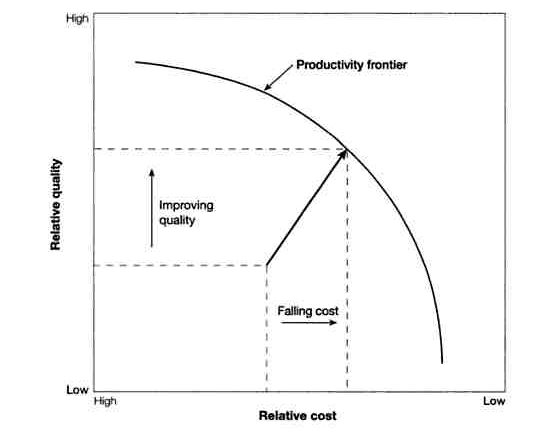

I’ve heard many people tell me, and see many posts on LinkedIn, that they prefer an ’evolutionary approach’ to organisational change. Not a revolution. Sometimes, of course, this is an excuse for not changing much at all besides some titles and names for processes. But often, it’s actually a genuine belief. And I worry about this approach more and more.
Why do I worry? Because you simply don’t have the time. Let’s explore this some more.
First, let’s define natural selection (with a little help from ChatGPT).
ChatGPT tells me that: Natural selection is the process by which certain traits become more common in a population over time because they provide an advantage for survival and reproduction. Organisms with advantageous traits are more likely to survive and pass on their genes to their offspring, while those with less advantageous traits are less likely to survive and reproduce. This results in the gradual evolution of populations as advantageous traits become more common and less advantageous traits become less common.
Keep in mind here that ’less advantageous’ does not include traits that have become superfluous. Nor does it mean every disadvantage is evolved out immediately, or even at all. Natural selection is less ‘survival of the fittest’, and more ‘survival of the least unfit’. But this is fine, given an environment that allows for this slow adaptation to happen.
For this we can turn to the field of strategy, and Professor Porter’s Productivity frontier.
Porter’s Productivity frontier is a concept in economics that describes the maximum level of productivity that can be achieved by a business or industry given its available technology, resources, and inputs. It represents the most efficient way of producing a particular product or service, and serves as a benchmark for businesses to strive towards. Businesses that operate at or near the Productivity frontier are considered to be highly competitive and efficient, while those that operate further away from the frontier have room for improvement. By improving efficiency and moving closer to the Productivity frontier, businesses can increase their profitability and competitiveness in the market. This can be visualized in a graphic, as shown below.
 Picture from: Productivity frontier: Operational effectiveness versus strategic positioning (Porter and Teisberg 2006)
Picture from: Productivity frontier: Operational effectiveness versus strategic positioning (Porter and Teisberg 2006)
Every so often, something happens that pushes the Productivity frontier outwards. This can be some sort of technological innovation, or process improvement, or even the discovery of cheaper material. When this happens, one organisation will have a period where they benefit (same quality at lower costs or higher quality at the same costs) while their competitors catch up.
Now, we can see some similarities here with natural selection:
Well, there’s a reason we’ve gone through some major evolutionairy shifts in the past. When the environment changes radically in a (relatively) short amount of time, the advantages and disadvantages of certain traits suddenly get all mixed up. Meteors impacting, Ice Ages starting and Ice Ages ending are all examples of sudden(ish) change in context where the established order was thoroughly restructured.
We’ve seen this in our modern world as well, and with an increasing frequency:
The list goes on and on and on. And every time, the Productivity frontier moved for certain industries. In such cases, the first mover(s) had a competitive advantage while the laggards, that months before had (sometimes excellent) structures and processes, struggled to catch up.
Sometimes, the laggards never recovered.
The book “Big Bang Disruption” by Larry Downes and Paul Nunes explores how the digital revolution has changed the way businesses innovate and compete. The main findings of the book can be summarized as follows:
Overall, the book argues that the digital revolution has created a new type of disruption that requires companies to be more agile, innovative, and willing to disrupt their own business models.
What it means for you though, is that there’s simply no more time for evolutionairy change. While on the operational and tactical level an approach of continuous improvement or adaption is still beneficial (if not absolutely necessary), strategically you can’t afford to sit on your laurels. Last week’s winning strategy might actually be today’s problem. You should be willing to revolutionalize on a moments’ notice, and set up your organization in a way that supports this. Scale is your enemy. Rigidity is your enemy. Centralization is your enemy.
Revolutions in business are painful because they’re not set up for frequent change. The answer isn’t to reduce the frequency and impact of change. The answer is to increase the ability to absorb change. Because you’re going to need to, more and more.